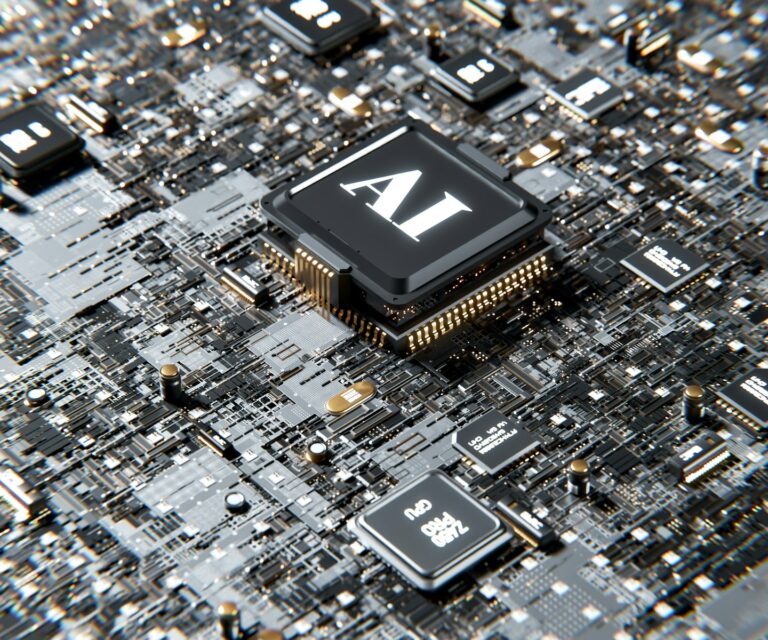Software Development: The “AI SWE” — Agents That Can Write, Debug, and Deploy Code
Software is eating the world — and now, AI is rewriting it. The next revolution in software engineering isn’t about better frameworks or faster compilers; it’s about autonomous AI software engineers, or what experts are calling AI SWEs. These agentic systems can write, debug, test, and even deploy code — often faster and more accurately than human developers.
We’re entering the era where software builds itself.
From Code Assistants to Autonomous Engineers
It started with autocomplete tools like GitHub Copilot and ChatGPT’s code generation. These early assistants boosted productivity but still relied on human oversight. The new generation of AI SWEs — powered by agentic architectures — go much further.
They don’t just suggest code. They own the development process, handling entire projects end-to-end:
- Writing: Translating feature specs into complete, functional codebases.
- Debugging: Identifying, diagnosing, and fixing issues autonomously.
- Testing: Running QA suites, generating test cases, and verifying integrity.
- Deployment: Managing CI/CD pipelines and monitoring live systems.
In short, AI SWEs can operate like full-stack engineers — without fatigue or context loss.
The Rise of Agentic Software Development
AI SWEs are built on the foundations of agentic AI, combining reasoning, memory, and autonomy. Unlike static code models, they can plan, execute, and learn from the outcomes of their actions. A typical AI SWE consists of multiple specialized sub-agents:
- Architect Agent: Designs the system structure and dependencies.
- Coder Agent: Generates and modifies source code.
- Debugger Agent: Detects and corrects issues through iterative testing.
- DevOps Agent: Handles builds, deployments, and monitoring.
- Documentation Agent: Writes and maintains readable technical docs.
Together, they form an intelligent, self-coordinating development team.
Real-World Use Cases of AI SWEs
This isn’t theoretical — it’s happening now:
- Cognition Labs’ Devin, the world’s first fully autonomous software engineer, can complete complex coding tasks from natural language instructions.
- OpenDevin and DeepSeek’s developer agents collaborate across multiple environments to deliver production-ready code.
- Enterprise teams are integrating AI SWEs into agile workflows, letting human developers focus on creative architecture while agents handle maintenance and iteration.
Within a few years, it will be standard for every development team to have a digital SWE team working alongside humans.
Benefits of AI SWEs
- Speed: Projects that take months can be completed in days.
- Quality: AI never forgets standards or skips tests.
- Cost Efficiency: Reduces the need for large dev teams on routine tasks.
- Scalability: Multiple AI SWEs can collaborate on modular systems without overhead.
- Continuous Improvement: Agents learn from feedback and evolve with each project.
Human Developers in the AI SWE Era
Despite their capabilities, AI SWEs won’t replace developers — they’ll amplify them. Human engineers will transition from writing code to managing agentic teams:
- Defining requirements and goals.
- Overseeing AI decisions and ensuring ethical coding practices.
- Integrating creative problem-solving and domain expertise.
In other words, humans will become AI software managers, directing fleets of intelligent coders.
The New Software Factory: Fully Autonomous Pipelines
In the near future, software development pipelines will look like this:
- Product managers describe features in natural language.
- AI SWEs translate them into design docs and working code.
- Testing agents validate performance and compliance.
- Deployment agents push updates directly to production.
- Monitoring agents detect bugs and self-heal issues.
This closed-loop system represents a fully autonomous software factory — where code is continuously improved by agents that learn from real-world performance.
The Role of BestAIAgents.io
As AI development teams become the norm, platforms like BestAIAgents.io will serve as the discovery hub for AI SWEs and related agent ecosystems. Businesses and developers will use it to find:
- Specialized agents for languages, frameworks, or deployment environments.
- Collaborative AI dev teams optimized for enterprise or startup workflows.
- Verified agentic systems ready for secure integration into production pipelines.
BestAIAgents.io is becoming the new “GitHub for AI agents” — a global marketplace for intelligent digital engineers.
Challenges and Considerations
The rise of AI SWEs raises key questions:
- Accountability: Who is responsible for code written by an autonomous agent?
- Security: How do we prevent agents from introducing vulnerabilities?
- Ethics: How do we ensure open-source fairness and compliance?
Regulatory frameworks will need to evolve as AI takes a greater role in mission-critical software systems.
Conclusion: The Next Era of Software Creation
The software industry is evolving from human-crafted to AI-orchestrated. AI SWEs are not just assistants — they’re collaborators capable of managing entire development lifecycles.
Soon, the question won’t be who wrote the code — but which agentic system built it.
And with BestAIAgents.io, the world will have a trusted gateway to discover and deploy the AI engineers shaping the next generation of software.












